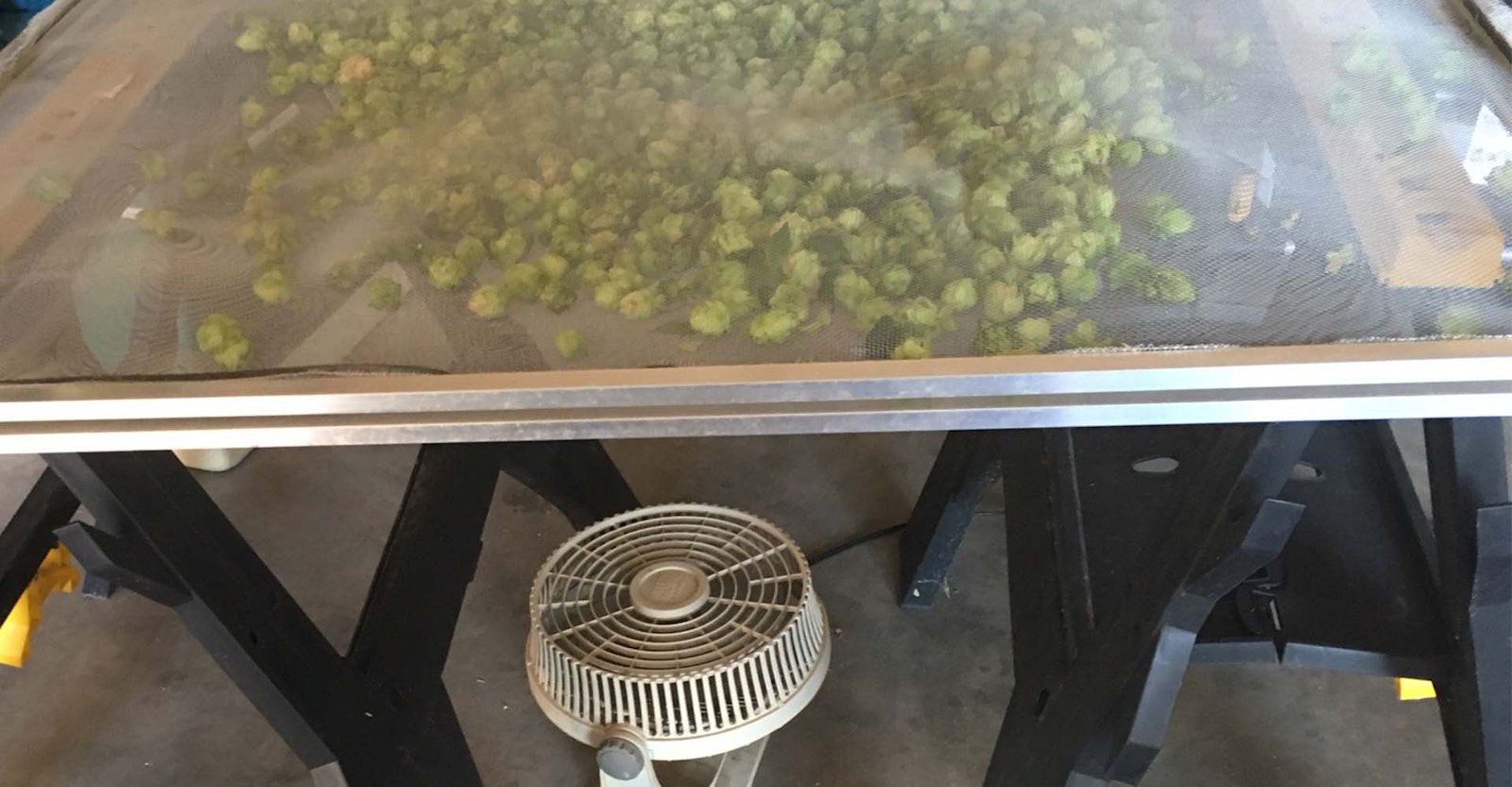One of the most approachable beer ingredients a homebrewer can tackle is homegrown hops. Sure, yeast wrangling is a fun, nerdy challenge, but chances are, the wild bugs will produce something that reminds you more of a used diaper than Cantillon. And yes, wheat and barley grow all over, but even the most stewarded of plots in a typical homebrewer’s backyard will produce barely enough for the nanoest of nano batches (not to mention, the need for home malting).
Hops is a weed and relatively easy to get started, so if you tend your bines over the growing season, you’ll probably be looking up at enough cones for several batches of homebrew.
Hops Harvest Timing
The plant does all the hard work over the summer, but as the days shorten, it’s time for the brewer/farmer to go to work. The timing of the harvest is critical. If you pick too soon, you may be left with underdeveloped flavors that have more of a grassy note and take an even longer time to dry. Pick too late and you may be left with oxidized, resinous hops flavors that can come off oniony, garlicky, or even cheesy. Each hardiness zone is going to be different, but careful monitoring of the cones’ firmness is the easiest way to track hops maturity. Ripened hops cones will have a parchment-like texture on the outside and when squeezed will rebound to their original shape relatively quickly. Rub the cones in your palm to get a sense for the aroma development and let your nose, eyes, and hands guide you.
Hops Harvest Methods
There are two primary methods of harvesting in a home-garden setting: slash-and-groom or pick-in-place. The choice is yours. In the slash-and-groom process, you cut the plant at the base, slash near the trellis at the top, and take the entire length of the hops plant for processing. Slash-and-groom is more efficient and the equivalent of what actual hops farmers practice. However, there is a yield penalty by harvesting immature cones that may otherwise fully develop.
With the pick-in-place strategy, you leave the bines growing on the trellis and pick the mature cones up and down plant as they become available. With pick-in-place, you’re able to continually harvest cones at the ideal ripeness, but efficiency is reduced by continually needing to monitor your bines. For some homebrewers/gardeners (myself included), hops plants not only serve the purpose of providing ingredients for the next batch, but also add a nice landscaping element. For that reason alone, I prefer the pick-in-place approach—I enjoy the sight of those bines changing with the season.
Preserving Your Hops
Regardless of the harvest method, preserving the hops for when you need them is the real challenge of the season. Obviously, you can avoid the issue altogether by brewing a wet-hopped beer to capture the essence of the harvesting season. If the timing of the harvest and the opportunity to brew don't coincide perfectly, you can store your wet hops in a corny keg that has been thoroughly purged of atmospheric air with CO2 or N2. If kept cool, the blanketed wet hops will keep for several weeks without degrading too much.
Drying hops can be as complicated or as simple as you want. I’ve tried a number of approaches over the years, all with varying levels of investment and success. The easiest method is simply spreading the hops out on a pizza sheet and letting them dry in a hot/dry area of your home (the garage works great). The downside to this method is that it takes more time, and you’re limited by the number of pizza trays you have.
A food dehydrator works great. Despite its limited capacity, it’s incredibly quick, so if you’re diligent, you can process a large harvest relatively quickly. An oven can work, but it’s a little more difficult to keep it from getting too hot—if you’re not careful, you'll be left with a useless batch of brown, crispy hops and a house that smells like spicy, burned grass.
The method that I’ve settled on over the past couple seasons requires two window screens, a fan, and a hot garage (pictured above). I can spread about 2 pounds (907 g) of hops over a 3 foot x 3 foot (1 m x 1 m) window screen. I then place the second, complementary screen over the hops and attach the two screens with Velcro, which allows me to rotate the hops as they dry. I then place the hops rack above the fan (sawhorses do a decent job for suspending the rack). Depending on how hot the garage gets, this method can dry the entire batch in 24 hours. As with the harvest, let your senses be your guide while drying the hops.
Dry Hops Preservation
Once the hops are dried, it’s time to store them for long-term preservation. The best option is a vacuum sealer. Prices for a decent food saver seem to drop every year, so if the number of bines in your yard is growing year over year and you’re looking to save your hops for more than a couple months, it may be worth investing in one. If you plan to use your hops within a couple months after harvest, a freezer bag packed with hops, followed by a judicious squeezing of as much air out of the bag as possible, is a perfect solution. Be sure to weigh the hops before packaging and label your storage bags with the vital stats.
As with any other produce you grow, with a little effort, homegrown hops can taste better (and be more special) than anything you’ll find at the store. The ability to grow your ingredients, even at a homebrew scale, gives you an appreciation for the effort and skill it takes to bring these ingredients to the commercial marketplace at such large volumes.

